
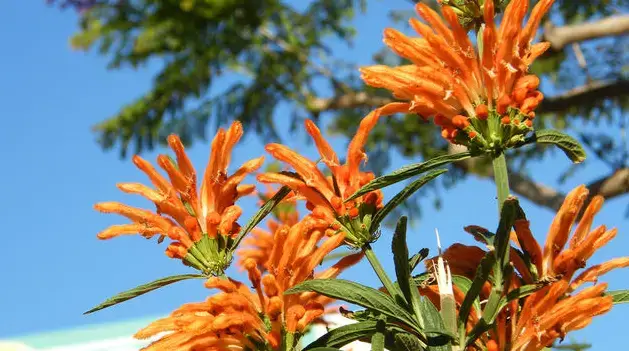
Wild Dagga (Leonotis leonurus), also known as Lion’s Tail, is a flowering plant native to South Africa. Traditionally used by indigenous communities for its medicinal and recreational properties, Wild Dagga has gained global recognition for its calming effects, respiratory benefits, and overall wellness support.
In this article, we explore the key wild dagga benefits, its active compounds, traditional uses, modern applications, what is the correct way to consume it, as well as interesting facts about its effects and cultivation.
What is wild dagga?
Wild Dagga is a hardy shrub in the Lamiaceae (mint) family, known for its striking orange tubular flowers and aromatic leaves. The plant grows in dry, sunny regions and has been used for centuries in South African herbal medicine. Its leaves and flowers are typically smoked, brewed into teas, or used as tinctures.
It can reach a maximum height of 3 meters and is considered an invasive species plant, as it expands to a magnitude that prevents the growth and spread of other species around it.
The plant is sometimes considered a natural alternative for relaxation and mild euphoric effects, making it popular in both herbal and wellness communities.
It is very common to confuse this plant with similar species, such as Klip Dagga, Leonorus Cardassia, and Leonotis nepetifolia.
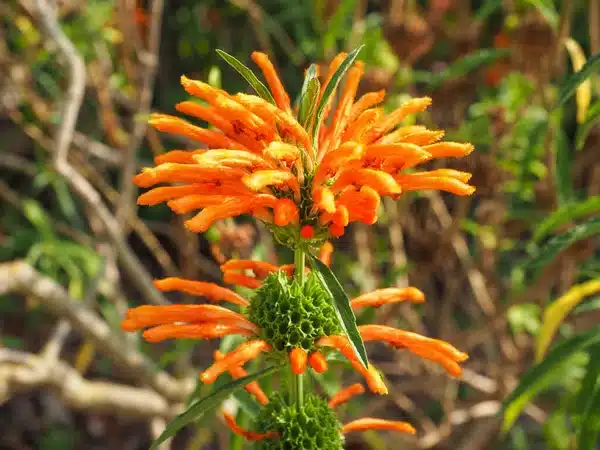
How to grow dagga correctly?
It is easy to grow. However, it is necessary to have a large space outdoors because it is a plant that tends to increase very tall, and it can be grown in any soil as long as it is fertile, rich, and with excellent drainage.
At the time of planting, we must be very careful with the treatment we give it. We must try not to overwater or soak it with too much water, keep the planting area clean, and prune the plant whenever necessary as it helps in its growth significantly.
Note: The dagga is drought resistant. However, it is good to supply water sporadically in those times. It can also be grown in pots or directly in your garden.
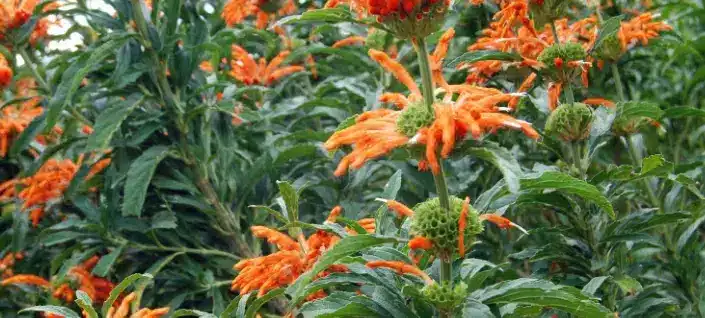
Positive wild dagga effects
Several studies have concluded that dagga produces a euphoric feeling and, at the same time, a sense of tranquility and well-being. This happens thanks to a component of dagga called “Leonurin,” which causes a sensation similar to THC.
Its effects are very similar to the products produced by cannabis and marijuana, except that marijuana and cannabis act faster in our organism and have a greater impact on us.

Main Wild Dagga Benefits
Consuming dagga produces in our organism a notorious change, which helps to alleviate certain ailments, both psychological and physical. For example, we can mention that:
- Reduces the level of stress
- It is an excellent ally for relaxing and socializing.
- Like THC, it helps to change or improve sensory perception and highlight certain aspects of our site, such as colors.
- It increases our appetite.
- It contains many dermatological and anti-inflammatory properties.
Clarification: Although its effects are similar to cannabis, it takes time to act in our organism. The products and benefits usually appear with time and with the constant consumption of dagga.

Modern Wild Dagga Benefits
Relaxation and Stress Relief
Wild Dagga is known for its calming effects on the nervous system. The plant may help reduce tension and promote a sense of relaxation without causing heavy sedation.
Respiratory Health
The plant’s traditional use as a remedy for coughs and bronchial congestion has been validated by its mild expectorant and anti-inflammatory properties, which can help clear airways and ease breathing.
Mild Euphoria and Mood Support
Wild Dagga’s alkaloid content can produce mild mood-enhancing effects. Many users report a subtle sense of euphoria and mental clarity, making it useful for meditation, creativity, or general stress relief.
Anti-inflammatory and Antioxidant Properties
Rich in flavonoids and terpenoids, Wild Dagga supports the body’s natural defense against oxidative stress and inflammation, promoting overall health and wellness.
Topical Applications
Wild Dagga leaves and flowers can be infused into oils or balms for topical use. These preparations may help soothe minor skin irritations and reduce localized inflammation.
Wild Dagga Uses
In its country of origin, it is used for traditional purposes. Specifically, the African Zulu and Xhosa tribes use dagga in their spiritual rituals. On the other hand, these tribes have long relied on wild dagga for its medicinal and spiritual properties:
- Respiratory Support: Traditionally used to relieve coughs, colds, and bronchial issues.
- Pain Relief: The leaves were used to alleviate headaches and joint discomfort.
- Calming Effects: Smoked or brewed as tea, Wild Dagga was believed to reduce stress, anxiety, and induce mild euphoria.
- Spiritual Practices: Used in ceremonial contexts to enhance meditation and spiritual awareness.
Advantages
It relieves common ailments such as headaches, stomach upset, and fever.
Some studies have indicated that the consumption of dagga is useful in curing some skin diseases, respiratory diseases, and joint diseases.It helps to reduce stress and causes a feeling of well-being.
It relieves pain and swelling caused by insect or snake bites.
Dagga is an excellent cardiac tonic.
Thanks to its calming effects, dagga is ideal for socializing or interacting with people.
Disadvantages
Like any other narcotic substance, consuming dagga excessively or in large quantities can make us addicted and dependent on it, which can make us aggressive or irritable when we do not consume a certain dose of it.
Depending on where it is planted, this plant is considered a weed, as it impedes the growth of plants or crops such as rice and sugar cane.
In addition, it cannot be consumed by pregnant women, and the regularity or amount of consumption may cause the following effects:
- Loss of consciousness.
- Tachycardia
- Anxiety
- Paranoia
How to prepare and consume the plant?
Most people smoke or consume dagga with some other substance in their joints, and it is common to use the pipe where the recommended dose of consumption is 15 to 30 mg per day. Different people consume dagga in liquid form or as tea.
The most common recipe for preparing dagga tea is as follows:
- ½ gram of dagga.
- ½ teaspoon of butter.
- One tea bag of any tea.
- 1 ½ cup of water.
- Sugar or honey to taste.
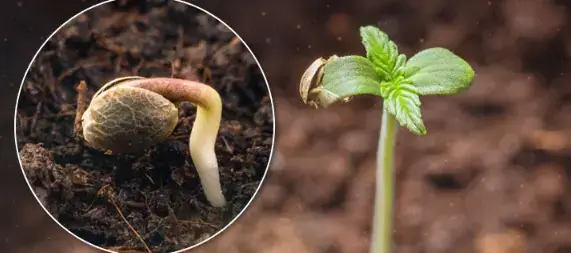
Steps to prepare it:
- First, mix the dagga with the butter evenly and make the mixture perfect; for this, we use a spoon.
- Next, empty the contents of the tea bag and fill the tea bag with the already prepared mixture of dagga and butter. Heat the water.
- Once the water is ready, place the tea bag with the mixture to heat for 30 minutes, but not let the water boil. If you notice that the water begins to boil, reduce the stove’s heat to avoid burning and, if necessary, add more water so that it does not evaporate.
- After 30 minutes Turn off the water, remove the bag, pour the water into a cup, let it cool for 5 minutes.
- Finally, add sugar or honey to taste.
Important: its medicinal use is through pills, and it is very easy to get it as an infusion as well. However, your doctor must specify the correct way and dose to consume.
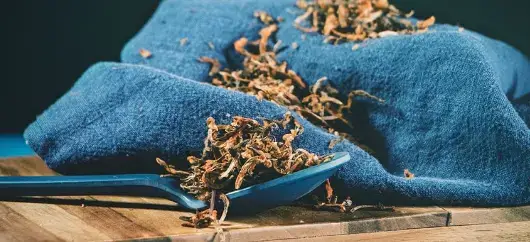
Considerations and Safety
While generally considered safe, it’s important to use Wild Dagga responsibly:
- Pregnancy and Breastfeeding: Limited research is available, so caution is advised.
- Dosage: Start with small amounts when smoking, brewing tea, or using tinctures to assess individual tolerance.
- Psychoactive Effects: Mild euphoria may occur. Effects are usually gentle and short-lived.
- Interactions: Consult a healthcare provider if you are on medications or have underlying health conditions.
The Wild Dagga benefits are diverse, spanning relaxation, respiratory support, mood enhancement, and antioxidant protection. Whether used traditionally as a herbal remedy or incorporated into modern wellness routines, this plant continues to be valued for its holistic effects on body and mind.
Incorporating Wild Dagga into your lifestyle can help you achieve natural stress relief, improved respiratory function, and overall well-being.
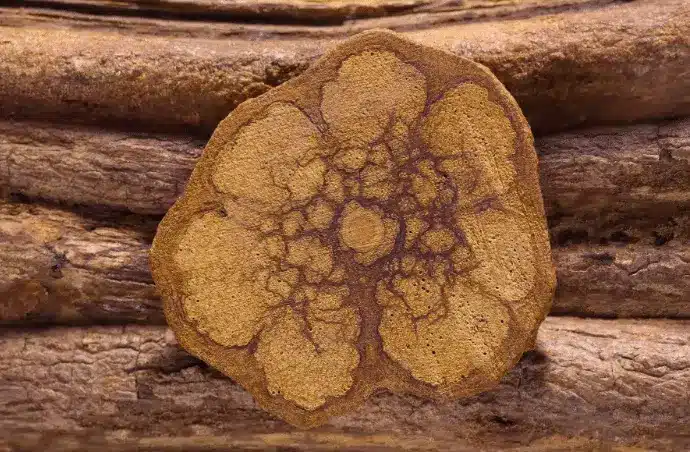
Benefits of Banisteriopsis Caapi: Natural Health and Well-being

Side Effects of CBD: An Updated Perspective

Ultimate Guide: How to Ingest Calea Zacatechichi


